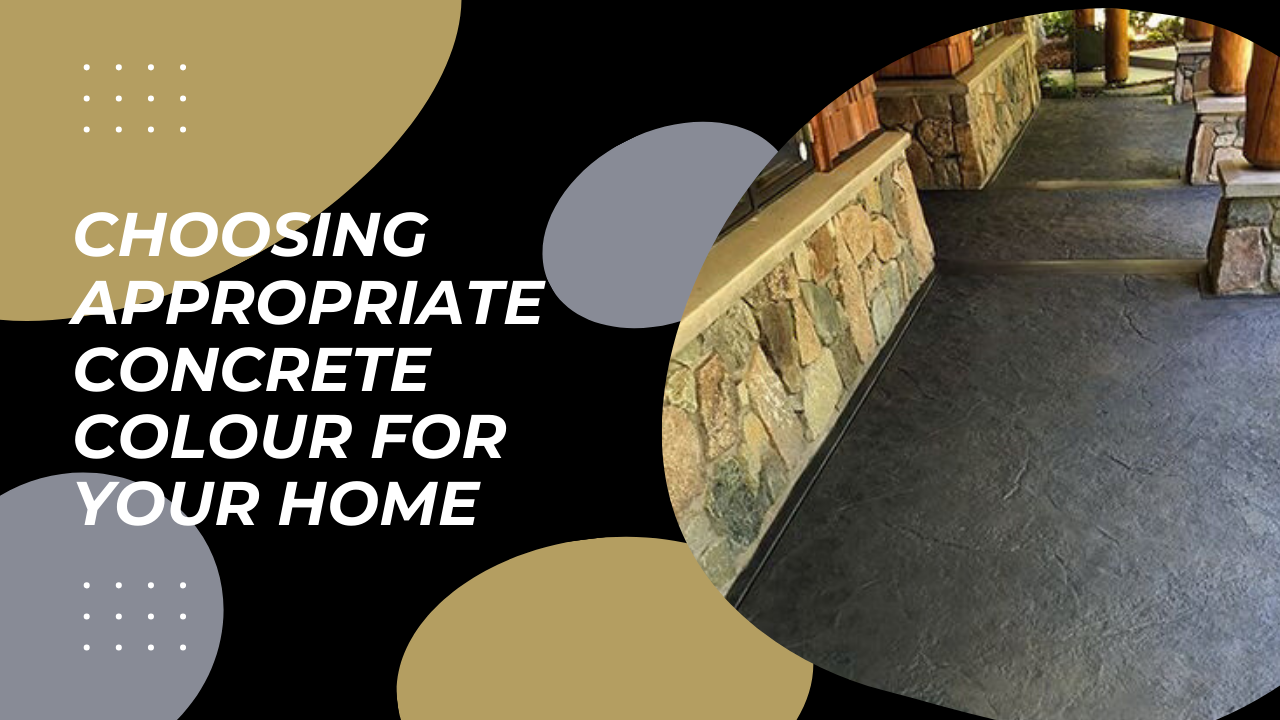Age long, the mixture of sand, cement, small stones and water is used to form a grey-coloured substance semantically defined as concrete. However, with decorative innovations in concrete forging, the conception of concrete as only a grey-coloured mixture is no longer current. Now, there are different concrete colour ranges to choose from. When building or remodelling your home, the most important aesthetic determination is, therefore, being able to agree on the best concrete colour to adopt. Basic considerations may include concrete colouring technique to be used, surrounding landscape colours, architecture material colours, existing fixtures, etc. A careful consideration of all these important factors will help guide you toward selecting the best colour(s) and creating your desirable design appeal. Below is 5 considerations as significant bases to guide home’s concrete colour selection.
- Consider Matching Colours
You can easily find colour inspiration around your immediate environment; the landscape, the ocean, the mountain etc. are good prompters to selecting concrete colour for the home. Some personal discretion on whether your preference lies with matching environmental colours or contrasting them, will be needed. When your preference is to match, it is important to know that you may not be able to get an exact match. Also, there might be too many potentially adoptable natural colours. The basic rule here is to stick with only three colours and adopt distinct styles to match.
- Consider Finish Method
Depending on the installation style, there are a variety of finishes you can use to create your decorative concrete colouring. The adopted method will directly influence the output colour of your concrete. Honed and polished concrete are better colouring style for smooth floor finishes. However, exposed aggregate is better for outdoor application like patios, driveways, pool deck, etc. Aggregate concrete helps to create a patterned and textured-like finish. The basic rule here is to split both the interior and exterior of your home into 3 sections. 60 percent of a particular colour will be for the base areas, 30 percent for the roof section while, less visible spaces can take up the remaining 10 percent.
- Considering Existing Fixtures, Furniture and Fittings
Remodeling a home, usually, does not necessitate an outright overhauling. There remains some key fittings and furniture that could influence concrete colour selection. Ensure you factor in both outdoor and indoor fixtures and furniture in your colour selection. The basic rule here is to choose similar colour palette and create continuity for a seamless flow between the interior and the exterior of your home. if your exterior colours are considered too strong for interior spaces, adopt a half strength version of similar palette.
- Consider The type of Building Materials
The different building materials used to construct or renovate a house further enhances its overall design appeal. Hence, this should likewise influence concrete colouration choices. The rule here is to work with the natural colour of the buildings materials and use same to your advantage. Else, stones, timbers and other natural materials in the building may contrast your concrete colour.
- Consider Resale Value Potentials
Personal comfort is logically central to home colour selection. However, when you can foresee a potential future need to sell the house, then, your design concrete colour should prioritise adding extra and timeless value to your home makeup and appeal. The rule here is to choose concrete colour wisely with a liberal mind open to the fact that treads don’t last forever. It is either you adopt a style that permits easy future repainting or choose neutral hues as your concrete colours. Neutral colours are often fresh, timeless and often favourable viewed by estate valuers.
